- 234
- 797
- 93
- Location
- USA Indiana
I know I’m going to get flamed, but here we go. PLEASE DO NOT ASK ABOUT PURCHASING ACCEPT THRU PM.
I just finished an up grade to my 1078. DELEATED the hub 2:1 gear reduction. I built direct drive hubs that can be
installed in 20 to 30 minutes per wheel. Doesn’t harm the original reduction system,(that can be reinstalled in
20 to 30 min). NO shim changes, ( the shims stay in place).
The difference in noise and power is dramatic. The noise was 45 mph 80 db, 50 83 db, 55 84db, 60 85 db.
Now the noise is 45 69db,50 70db, 55 71db, 61 74db. This may not seem like a lot but it is! I now have wind noise
that I never heard before! I can hear my blinker click at 45 mph or below!
Now the fun stuff. Before the change my 1mph to 60 was 28 seconds! Now it’s 19.78. 1mph to 40 was 14.63
now its 8.75!
Before anyone comments that somehow I’m going to break axles, transfer case, rear end, etc etc. Consider that
all those components are designed to withstand the maximum torque of the engine plus quite a bit more .
The maximum engine torque is the same. The only difference is the torque to the wheel has dropped 50 percent
if you look at the gear ratio only.
In the near future I will test its ability to pull loads on trailer. If I had to guess this will Be much better performance than before. The engine is happy in the power band where it belongs.
I invite anyone with a Lmtv that’s considering a gear swap to come to NE Indiana and drive mine. You will be impressed! Yes I plan on offering a kit to do this conversion, firming up details now. The first run will be 12 sets.
The cost will be around 2200/ 2400.00 Each set. 4 hubs. If there is enough interest…. Sorry for the long post.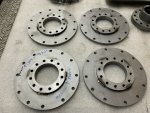
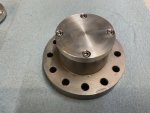
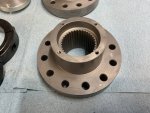
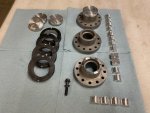
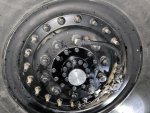
Anyone interested in purchasing a set, please post in the sales thread:
I just finished an up grade to my 1078. DELEATED the hub 2:1 gear reduction. I built direct drive hubs that can be
installed in 20 to 30 minutes per wheel. Doesn’t harm the original reduction system,(that can be reinstalled in
20 to 30 min). NO shim changes, ( the shims stay in place).
The difference in noise and power is dramatic. The noise was 45 mph 80 db, 50 83 db, 55 84db, 60 85 db.
Now the noise is 45 69db,50 70db, 55 71db, 61 74db. This may not seem like a lot but it is! I now have wind noise
that I never heard before! I can hear my blinker click at 45 mph or below!
Now the fun stuff. Before the change my 1mph to 60 was 28 seconds! Now it’s 19.78. 1mph to 40 was 14.63
now its 8.75!
Before anyone comments that somehow I’m going to break axles, transfer case, rear end, etc etc. Consider that
all those components are designed to withstand the maximum torque of the engine plus quite a bit more .
The maximum engine torque is the same. The only difference is the torque to the wheel has dropped 50 percent
if you look at the gear ratio only.
In the near future I will test its ability to pull loads on trailer. If I had to guess this will Be much better performance than before. The engine is happy in the power band where it belongs.
I invite anyone with a Lmtv that’s considering a gear swap to come to NE Indiana and drive mine. You will be impressed! Yes I plan on offering a kit to do this conversion, firming up details now. The first run will be 12 sets.
The cost will be around 2200/ 2400.00 Each set. 4 hubs. If there is enough interest…. Sorry for the long post.





Anyone interested in purchasing a set, please post in the sales thread:
ECO DIRECT DRIVE HUBS
Availability to be announced. First 10 sets will be ready soon. Tested on M1078 will fit others also. At the request of moderators please use this thread for sales related questions. Let me know if you have interest in a set by posting here . Thank you! For more information and ordering...
www.steelsoldiers.com
Last edited by a moderator:

